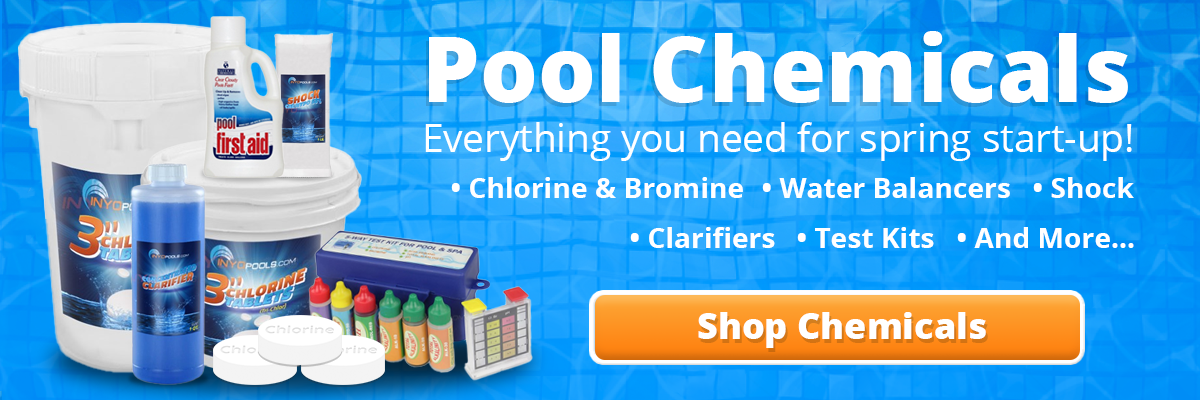You've just finished testing your water and have your results in hand. The amount of chemical you will need to add depends on your readings. You will want to adjust the levels in a certain order so that you don't make things worse. I will be adjusting the levels over the course of the next several days to avoid any adverse chemical reactions. These steps can be used for opening, maintaining or winterizing the swimming pool.
CLICK HERE FOR PART 1 How To Maintain A Swimming Pool Part 1 (Chemicals)
CLICK HERE FOR PART 2 How To Maintain A Swimming Pool Part 2 (Testing)
Click Here for Our Full Selection of Pool Chemicals (Chlorine, pH& Alkalinity Adjuster, Stabilizer, and More)



Inyopools Posted: 11/18/2017
New Pool Owner - We have generated hundreds of How to Guides / Blogs / and Videos to help our customers operate and maintain their swimming pool systems. Here is a link to our Do It Yourself (DIY) Swimming Pool Resources. As far as local classes go, you might try your local pool store.Reply
New Pool Owner Posted: 11/13/2017
Hi, I am a brand new pool owner and am in over my head. Is there a class or place that I can go to, to learn this stuff for my situation? The pool is already clean and I just need to maintain it.Reply
InyoPools Product Specialist Dennis R. Posted: 7/12/2017
SteveB - On a tough one like this, you might try using air to aerate you pool. See this article - "Using Air and Acid to Quickly Get Perfect pH/Alkalinity".Reply
SteveB Posted: 7/10/2017
I have a salt pool that always has high alkalinity, 130+. I have added 3 gallons of muratic acid over the past 3 weeks to bring it down but a week later it is back at 130. What should I be looking at to fix this high alkalinity problem?Reply
InyoPools Product Specialist Dennis R. Posted: 7/26/2016
Alkalinity - Thank you for your comment. In both cases, you will be adding Alkalinity Increaser. We will add this to the guide.Reply
Anonymous Posted: 7/25/2016
Please re-read this: "My next step would be to increase the alkalinity. I want to increase it to 100 ppm. To achieve this I need approximately 1.5 lbs per 10,000 gallons of water. Using the same calculations of above, I will need roughly 6 lbs. I'm going to wait until at least 24 hours have passed since I adjusted the calcium hardness otherwise the chemicals may react and cause the pool to turn cloudy. The 6 lbs can be added in one dose."1.5 lbs. of what? 6 lbs of what? Please clarify this paragraph. Thanks for your article. Ann
Reply